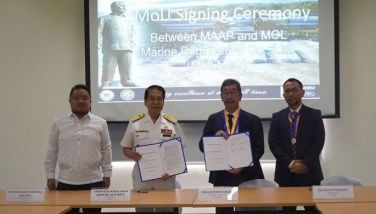The delicate dance between head and heart

In two months alone, I have had the privilege to speak at major, well-attended business conferences offered to mostly HR people on employee engagement and the need to bring humanity back into human resources. Something must be going on here.
In today’s rapidly evolving business landscape, leadership has transformed into a delicate dance between data-driven decision-making and a profound understanding of human emotions and experiences. Leaders of our time have realized that making critical decisions without considering the human cost is a near-impossible feat.
Becoming a genuinely influential modern leader hinges on the artful integration of leadership’s “head” and “heart” aspects. An esteemed leadership expert, Kirstin Ferguson, explores this concept in her groundbreaking book, “Head & Heart: The Art of Modern Leadership.” Ferguson argues that effective leadership requires a seamless blending of head and heart skills, a fusion that allows leaders to reach their full potential.
Ferguson’s framework categorizes these attributes into two distinctive yet interdependent categories: head-based attributes and heart-based attributes. The former includes curiosity, wisdom, perspective and capability, while the latter encompasses humility, self-awareness, courage and empathy.
All great leaders share these eight essential attributes, but mastering the art of leadership is about understanding when and how to apply them effectively.
Let us delve into four attributes – rooted in the head and two in the heart – and explore their pivotal roles in modern leadership.
Wisdom: Wisdom is the bedrock of effective leadership. It involves a conscious evaluation of known and unknown factors, meticulous weighing of risks and rewards, the quest for data and evidence, and the eventual selection of the most prudent path forward. As Ferguson aptly articulates, “Leading with wisdom is more than the accumulation of information; it is about using information in a way that allows us to listen to others, evaluate their perspectives, and make informed decisions.”
To lead with wisdom, one must acknowledge their limitations, conquer the fear of rejection, and remain vigilant against the endless quest for more data. True wisdom emerges when leaders understand their decision-making processes, learn from past mistakes, and find a purpose beyond self-interest.
Perspective: Leaders who lead with perspective possess a profound understanding of the environment or context in which they operate. This understanding empowers them to make well-informed decisions about the best action. It entails the ability to anticipate future developments and grasp the implications of current information. Ferguson underscores this by stating, “Perspective helps us find order even when it seems chaotic, providing the ability to perceive the unfolding nature of events.”
Leading with perspective involves’ reading the room,’ whether it’s a physical space, a company, an industry, or the broader world. It also entails recognizing who is absent from the conversation and staying attuned to external factors that influence the situation.
Humility: Leaders who lead humbly are open to seeking input from others and readily acknowledge their limitations. They understand that some matters are beyond their control and are receptive to new ideas without viewing this as a weakness. A humble leader actively encourages learning from those around them, highlighting the strengths of their team members and placing importance on listening, observing, and learning through action.
“The greatest leaders are willing to admit they don’t have all the answers. They’re open to learning from others and understand that no one has a monopoly on good ideas,” says Richard Branson
True humility lies in recognizing strengths and understanding when they might be the least experienced person in the room. It’s about valuing the contributions of others and fostering an environment where learning and growth flourish.
Courage: Leading with courage entails standing up for one’s beliefs, even in the face of adversity or pressure to conform. Courageous leaders cultivate psychologically safe environments where team members feel empowered to voice their opinions. This form of leadership is rooted in the understanding that speaking up, not just for oneself but also for the benefit of others, is essential for growth and progress.
By leading with courage, leaders build relationships based on action and commitment to rectify wrongs or to take risks that lead to positive outcomes. Courageous actions can range from taking on new challenges to addressing performance issues or confronting inappropriate behavior within the workplace.
If you have followed this column or had you been attending my leadership training, you would have heard these same things articulated repeatedly.
Real effective leadership involves capability, competence, soul, and character. In other words, it integrates head and heart attributes and skills without which would make you wonder whether the leader really is or not.
(Francis Kong’s podcast “Inspiring Excellence” is now available on Spotify, Apple, Google, or other podcast streaming platforms.)
- Latest
- Trending































